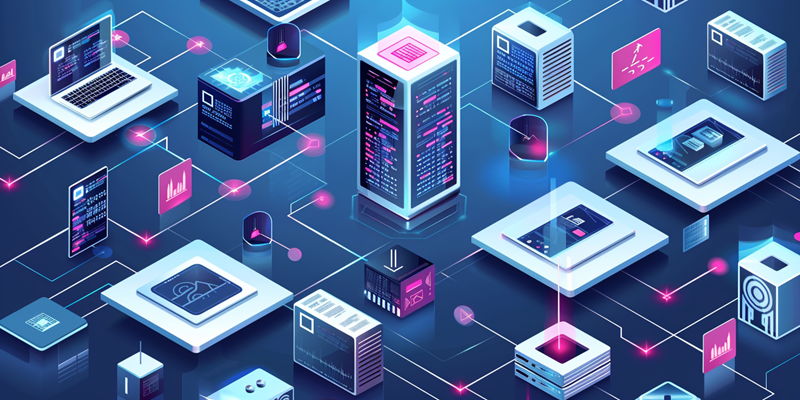The palpable buzz surrounding edge computing might have softened compared to its feverish peak, but it’s becoming increasingly evident that beyond the hype lies a solid bedrock that’s reshaping the data center industry. Edge computing is evolving from a trend to an inextricable part of the data ecosystem, critical to pushing technological boundaries while responding to the demand for low-latency, personalized user experiences. As edge computing spreads its roots, its impact, far from waning, is growing more profound and intricate, defying the simplistic narratives of past tech hypes.
Defining Edge Computing
Edge computing’s elusive definition confounds experts and industry players alike. Some see it as a serene counterpart to bustling data centers—vigilant outposts serving local clientele with decreased latency. Others envision a miniature cosmos of decentralized nodes, each an extension of the cloud’s reach, nudging computation closer to the point of need. The varying interpretations are as diverse as the applications that edge computing serves, from streamlining retail transactions to empowering smart city infrastructure, reflecting how custom the definition becomes when aligned with distinct operational goals.
This conceptual elasticity is less an obstacle and more a testament to edge computing’s versatile nature. As speakers at Data Center World 2024 elucidated, the edge is a chameleon, adapting its hues to the functional landscapes it inhabits. From latency-sensitive gaming applications to bandwidth-hungry content delivery networks, each rendition of the edge is a personalized answer to a specific set of techno-commercial demands.
The Tiers of Edge Computing
Delving deeper into the anatomy of edge computing reveals an intricate hierarchy of tiers, each serving distinctive operational purposes. At one stratum, we find the cloud-edge—a buffer minimizing the latency of cloud services, making AR/VR experiences seamlessly immersive. Ascend to the user-edge, and we encounter a realm designed for exacting, context-specific tasks like manufacturing automation, which can ill afford the slightest lag or computational drift.
This tiered reality further refracts the data center domain, propelling infrastructure development beyond saturated urban cores into burgeoning Tier 2 cities. Here, data centers become spatially aware entities, abiding by green building codes and infusing into local tapestries without besmirching their ecological or aesthetic contours. Edge computing, thereby, is not just redefining how data is processed; it is also reshaping where and how data habitats are constructed.
The Role of AI and the Continued Relevance of Edge
The advent of AI has stirred both excitement and existential introspection within the edge domain. Could the machine-learning renaissance dethrone edge from its pivotal tech pedestal? Not so, experts contend. Instead, they envisage a synergistic confluence where AI enriches edge ecosystems with predictive analytics, and in return, edge paradigms grant AI the speed and proximity it craves.
Industries like automotive, with their autonomous aspirations, demonstrate this interplay vividly. Edge computing doesn’t merely enable vehicles to interpret and navigate their surroundings in real-time; it also underpins the genesis of novel, data-driven business models. Thus, edge computing’s role emerges not as usurped by AI, but as vitalized by it, its relevance only magnified in a data-hungry era.
Operational Challenges at the Edge
The path of edge adoption is fraught with challenges, security standing prominent among them. Unmanned edge sites, sometimes nestled in remote locales, invite hazards like vandalism, testing the mettle of security protocols. Beyond physical security, orchestrating widespread edge assets demands meticulousness akin to conducting a sprawling symphony. Maintenance strategies, therefore, must be both proactive and predictive, forestalling failures before they rupture the seamless fabric of user experience.
Data Center World panelists concurred that standardization could spell the difference between operational tranquility and pandemonium. A uniform design ethos, together with advanced vendor management platforms, portends a future where the logistical complexity of maintaining a fleet of edge nodes is mitigated, coaxing out efficiency and reliability from the multitudinous entities that edge comprises.
Balancing Innovation and Scalability
Innovation pulses through edge computing’s veins, offering fertile ground for forward-thinking solutions. Energy-efficient server architectures, dynamic resource allocation algorithms, and the like are not merely theoretical notions but are being iteratively refined on the anvil of edge computing. This whirlwind of ingenuity is elevating the capacity of sectors from telemedicine to smart agriculture, enabling them to scale new heights of service delivery and operational dexterity.
Yet, scalability in the age of the edge is not just about numeric growth; it’s about growing smart—with prudence and precision. Panel insights from Data Center World 2024 suggest that as industries glean more nuanced insights from localized computing resources, edge computing is not just scaling up but also deepening its roots, broadening its reach, and fine-tuning its impact.
A Future Shaped by Adaptation
While the initial fervor around edge computing has quieted, its role in the data center realm is more significant than ever, cementing itself as a vital aspect of our data-driven world. Edge computing continues to break technological barriers and is pivotal for providing swift, tailored user experiences. Its growth is now an intrinsic component of the data landscape, holding a complexity and importance that goes beyond the oversimplified tales of past tech trends. The impact of edge computing, rather than diminishing, is proving to be increasingly crucial as this technology firmly embeds itself within the infrastructure of the industry. It’s clear that edge computing is not just a fleeting phenomenon but a transformative force that’s here to stay, ensuring that it remains a key player as the ecosystem evolves.

